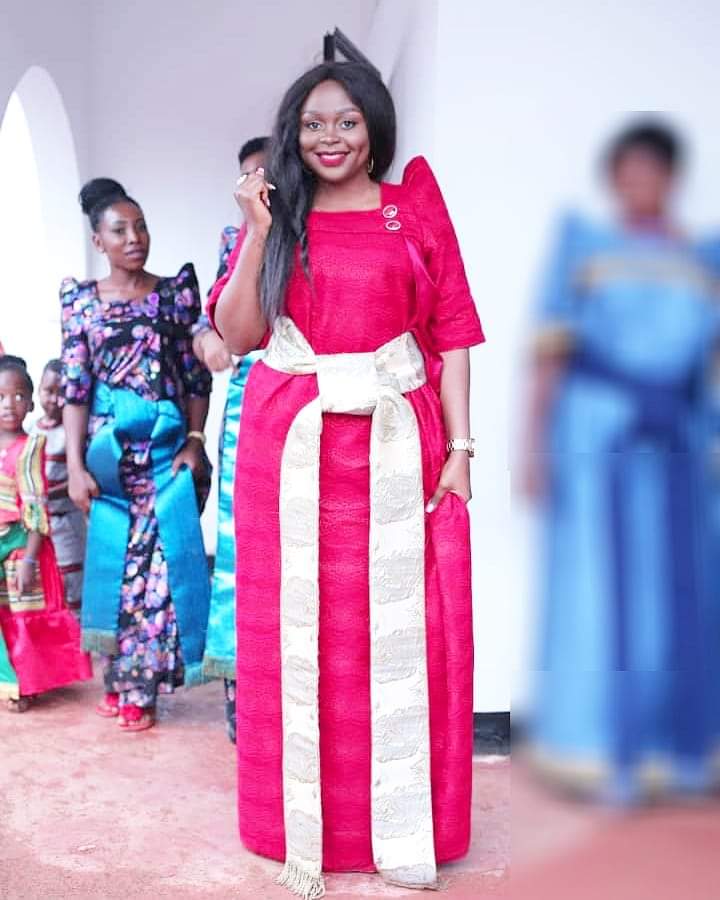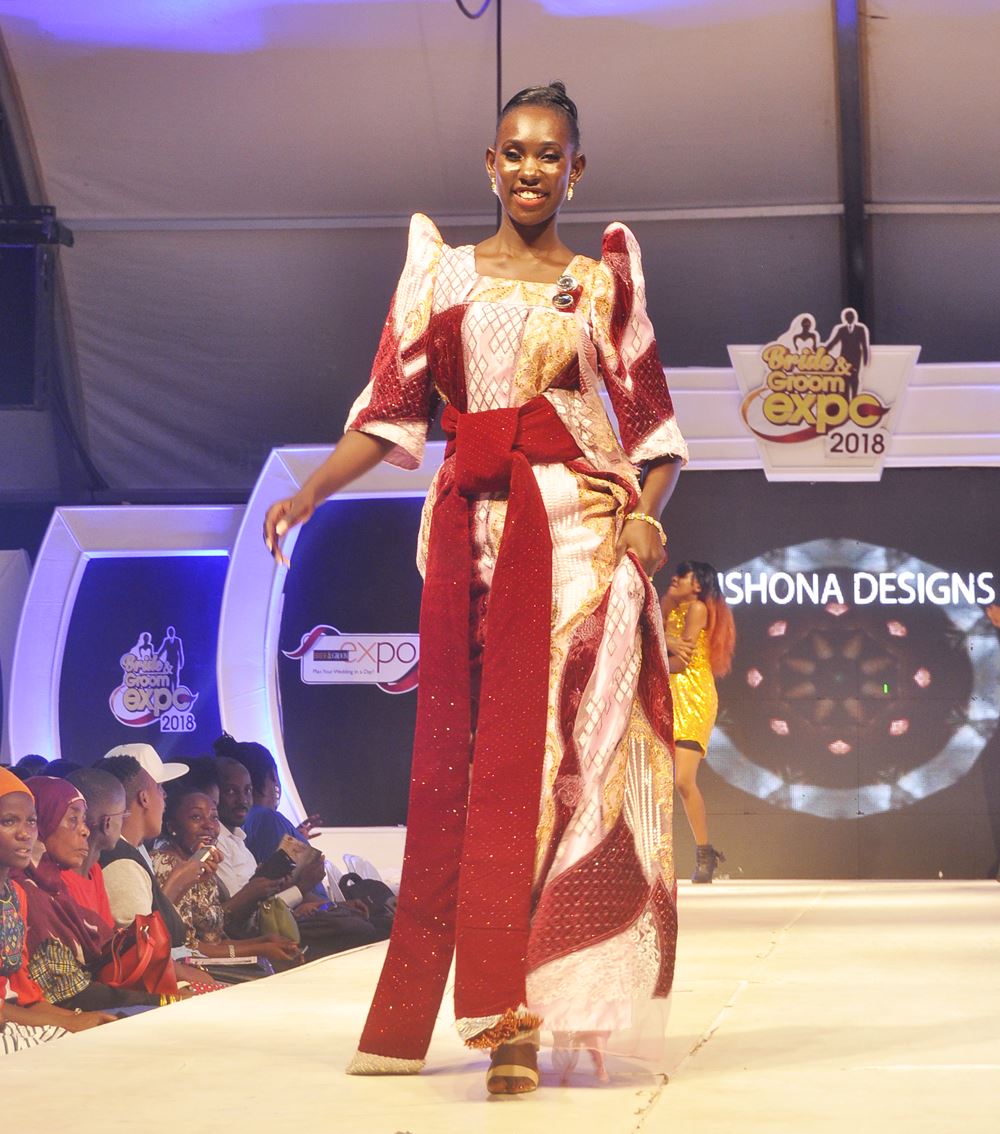When you visit most areas in Uganda, particularly the traditional kingdoms of Buganda and Busoga, you will find that it is a form of daily dress for many women.
In major cities and urban areas, however, women tend to wear it on special occasions such as coronation ceremonies, funerals, and weddings.
Gomesi is “a long dress touching the ground with triangular-shaped shoulder design, a square neck and some top clothing on one side around the hip area.” A belt is tied around the waist to hold the dress.

Photo: Pinterest
The traditional attire is made of silk, cotton, or linen fabric, but silk is the most expensive. A kikooyi or kanga is tied underneath the linen gomesi to ensure that the fabric does not stick to the body.

Photo: Twitter
Gomesi has since been the de facto national wear for women in Uganda.
“We used to wear a suuka, which was initially made from bark cloth, and then modified to cotton. It was a piece wrapped around your chest, with something to cinch it at the waist,” a lawmaker, Joyce Mpanga, said in 2017.

Photo: Dreaming International
In 1905, however, when the Church Missionary Society (CMS) started Gayaza, an all-girl boarding school, the missionaries did not like the suuka, especially as a uniform for the girls.
Thus, the school authorities called in for the Gomes brothers – two Indians of Goan descent – to design a uniform. This would eventually become Uganda’s de facto national dress for women.

Photo: keywordbasket.com
“The school was headed by women who were Victorian. Bare shoulders were frowned upon. Plus, the suuka would often come undone when the girls did any physical work. So, the first British headmistress, Alfreda Allen, called for a Goan tailor, Gomes. They came up with the idea of wearing a bolero over the suuka. But this was inconvenient too. Then Gomes started stitching this bolero over the suuka, this is the style we still follow. The puffed sleeves is a Victorian influence on the dress,” Mpanga said.

Photo: Kushona Fashion Designers
Today, the gomesi, also called the busuuti, is “a mark of respect, and must be worn at all social engagements, such as kwanjula (an introduction ceremony before marriage), marriage, funeral or even when you are meeting elders in the family,” said Florence Kiwanuka of the Buganda Kingdom.

Pic credit: Kushona Fashion Designers
It is not a single clothing. Apart from the six-odd metres used for the national dress, gomesi is accompanied with several garments to make it whole like the kiko.

Photo: satisfashionug.com
Hence, most Ugandan women will tell you that the process of wearing a gomesi can be cumbersome. Essentially, one must believe in their culture to be able to wear it regularly.
https://youtu.be/aUDhxJb6lSc










